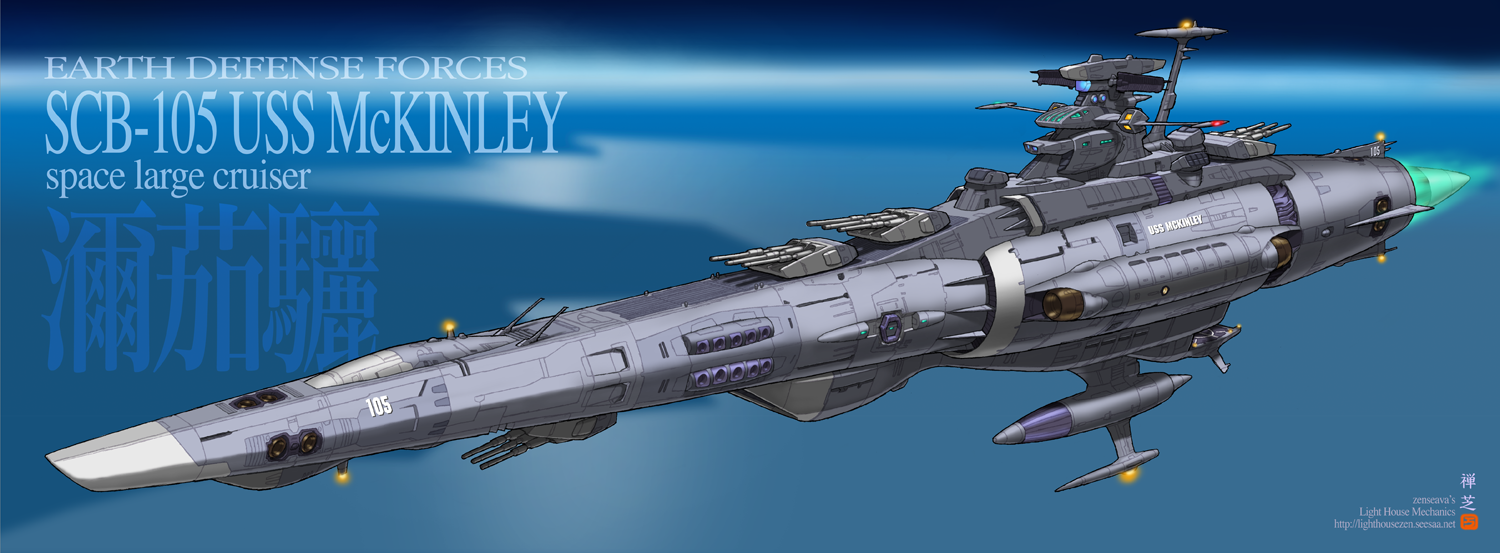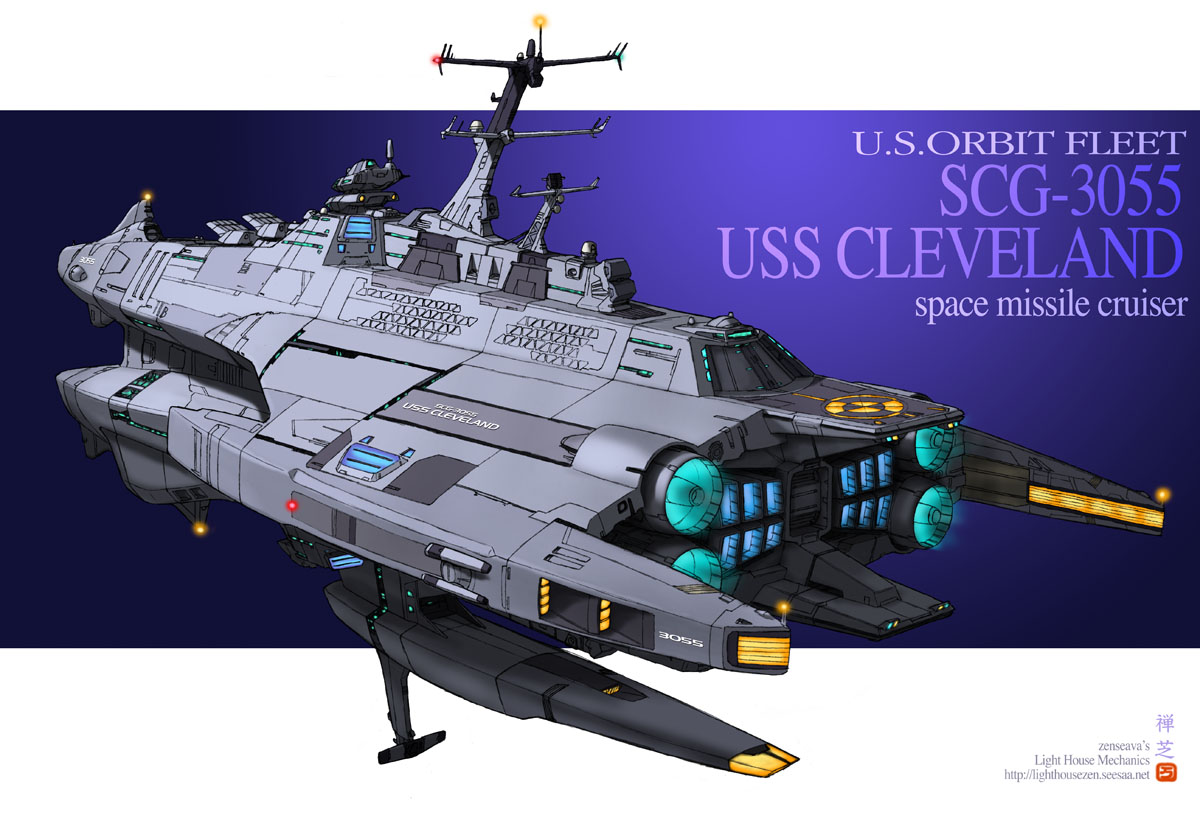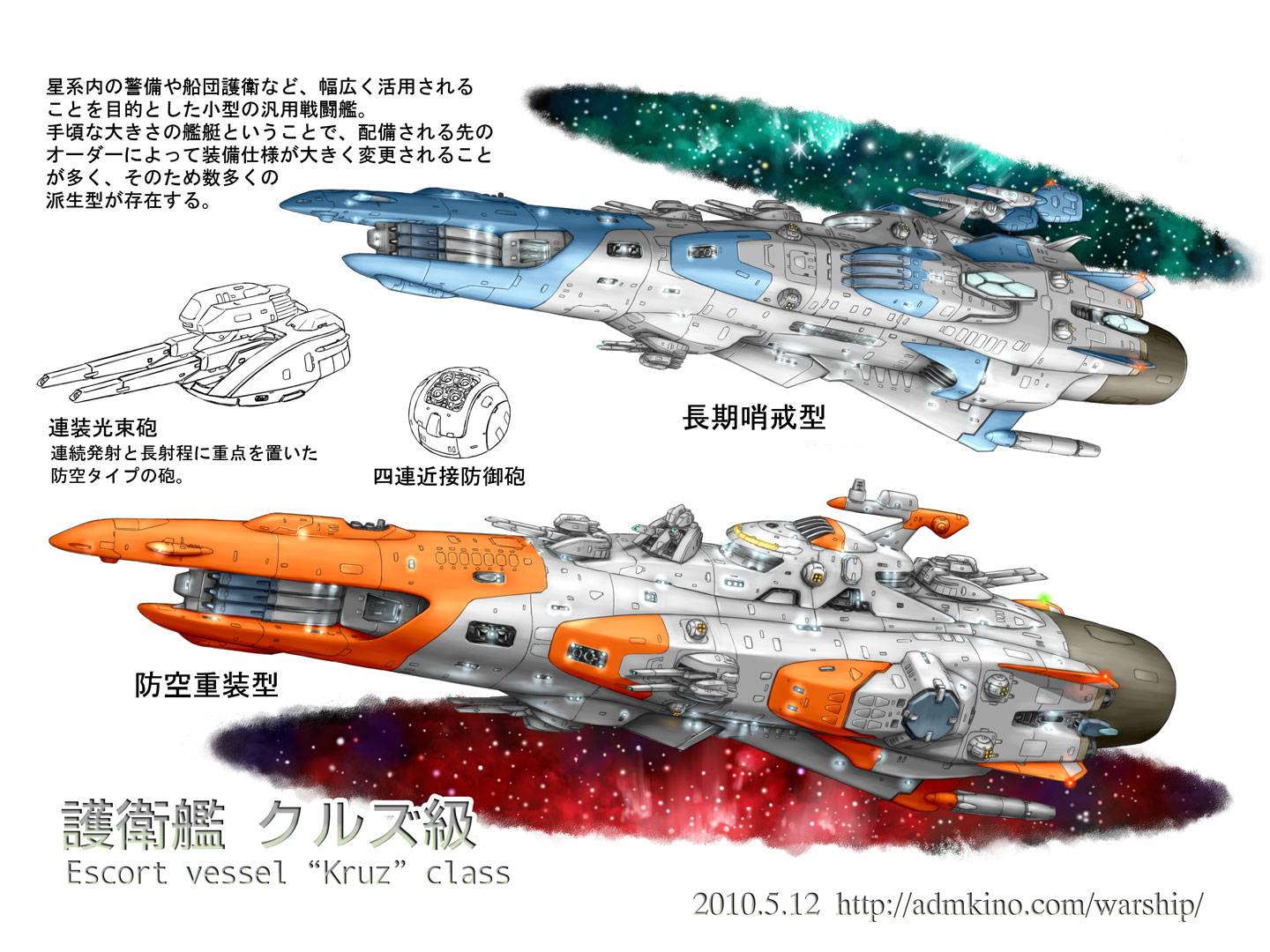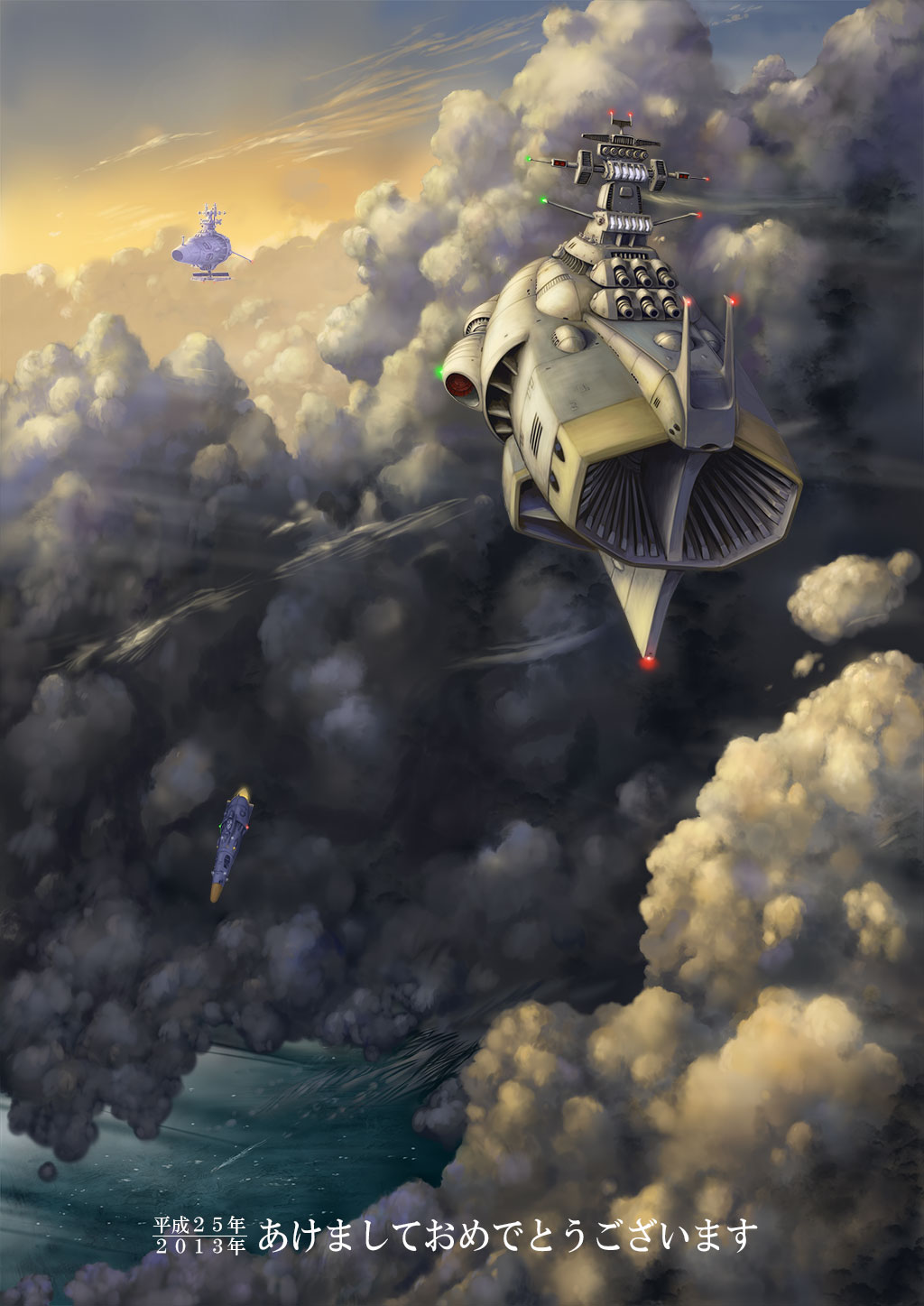Absalom wrote:Box like? As opposed to what, the twin pyramid like (or, alternatively, twin cone) design of a over/under single-hull battleship? The base designs are equally simple: the Omega is a hammer, and the battleship is two pyramids with their bases stuck together. The question of which to choose really depends more on how you'll be using them than anything else.
Jericho wrote:(Sigh) First: You are gonna have to explain your first point to me. Are you arguing that a seafaring battleship is a good model for a starship? Seriously i've been trying for days to understand your point but it eludes me.
And now we can actually get somewhere, it's all about asking the right question. And incidentally, I live inland, so there's a limit to how much I can even confuse myself with knowledge of wet navy ships.
Absalom wrote:Box like? As opposed to what, the twin pyramid like (or, alternatively, twin cone) design of a over/under single-hull battleship?
Let's start with this. Here, I'm basically accusing you of the same thing that you're accusing "battleship lovers" of: thinking about aesthetics to the detriment of design. What you need to do is:
1) break the design down into it's core components:
1 i) In the case of the Omega (and the Nova), if you ignore the rotating segment (which, if you go back and read starting at "from the Omega's basic hull form", you'll see that I explicitly did) then you have a big box up front, and a little box in back. A hammer, in essence, which you'll notice I already referred to the design as.
1 ii) In the case of the "battleship" design, the design simplifies down to either two cones with their bases stuck together, or two pyramids with their bases stuck together. Pay no attention to the conning and whatever-else towers, they're a distraction at this point (after all, do you really think that people would normally stick an Omega's docking bay at the front, where it's most likely to gather debris? why then stick the bridge outside of the deepest portions of the ship

).
2) analyze the the traits of those core components:
2 i) "Hammers" have their center of volume moved forwards in comparison to their center of length, which means that if their density is either distributed accordingly, or even in such a way that the center of mass is even further forwards, then the most effective place to put maneuvering thrusters is the very back of the ship.
2 i I) This configuration can provide good turning performance when compared to it's engine power, so if we assume a mostly inertial flightpath (or primary engines flanking the center of mass, with secondaries at the rear), a Hammer should be very effective at deciding which side of itself to present to the enemy.
2 i II) Unfortunately, any weapons that are mounted on front of the ship will not be able to reach behind the ship. You can locate them on the sides of the hammerhead instead of the front, but that doesn't provide any improvement over the mounting options of a "battleship", raising the question of what makes the Hammer so superior in the first place.
2 i III) Also, the most obvious use for the hammerhead is to stick most of the armor there so that you can keep almost ALL of your armor between the ship and the enemy. Given the Hammer's nice maneuvering this can work for one adversary, but what if there are two, and they engage in a joust with you? Even the most straight-forward of tactics will lead them to pass on opposite sides of you, making it impossible to defend yourself from both. A fleet joust is likely to be at least as bad, and if they actually try to mix in with your forces then it'll be much, much worse.
2 ii) "Battleships" (you know what? let's call them "Spires", to avoid undue comparisons) have their center of volume at the same point as their center of length.
2 ii I) This means that they'll have somewhat worse maneuverability than a Hammer, which is a downside, but that level of maneuverability would really only matter in dogfights, which are unlikely to last long between Outsider warships. Thus, this isn't really much of a loss. Note that I am assuming the center of thrust passes through the tips of both cones in the rest of these points, assuming that it passes through the plane of the cone's bases would produce a different analysis.
2 ii II) Assuming equal volumes, a Hammer will presumably have more mounting area on the sides of it's hammerhead than a Spire will along it's bases. This does have the potential to reduce the number of turrets with 360 degree "horizontal" coverage, but the risk is actually somewhat low: the America class heavy cruisers only have four heavy laser turrets, and Loroi cruisers (with the sole exception of the Swift Vanguard battlecruisers) seem to max out around 5 primary turrets. Even then, these turrets seem to reliably carry only two weapons, so unless there's some construction issue that prevents it, it should be quite possible to reduce the number of turrets while maintaining the same firepower.
2 ii III) A Spire doesn't offer any quick and obvious armor optimizations like the Hammer does (they can be done, mind you, but they don't really relate to ship layout and thus apply to both designs), but it does have one advantage over a Hammer: if you maintain the same measurement ratios, Spire surface areas should increase slower than with a Hammer. Thus, a Spire doesn't offer the armor
optimizations of a Hammer, but it does have an advantage of the actual surface area of the ship.
That is the basic form of my point:
Absalom wrote:What equipment or design features do I know that an Omega has and an Outsider human captain would love to have consist entirely of the FTL drive, hence why I mentioned it. As for what use I can see from the Omega's basic hull form, take off the rotator and you have a decent shape for a patrol cruiser: weapons and armor concentrated up front for maximum effect against pirates and similar, engines pintle/turret mounted in a relatively low-mass rear for relatively high maneuvering rates, and you'd have a good design for dealing with small groups of weaker enemies. The hammer design has it's good points, but nothing really recommends it for jousts.
a Hammer has some advantages in terms of maneuvering and an armor optimization (moving it all up front), and a conditional advantage on weapons placement, but I'm dubious about the maneuverability being a major feature for fleet battles, moving the armor to the hammerhead makes you more vulnerable to pincer attacks, the design has a tendency towards more surface area than a Spire (thereby reducing average armor thickness), and weapons placement should both only arise with large ships, and can potentially be solved by just increasing the weapons count in the turret (this one could by struck down by Word Of Arioch, though). A Hammer design is
NOT some sort of magical space-combat unicorn that's guaranteed to make everything better.
Jericho wrote:Second: I've never compared the omega to anything in outsider techwise because i simply used it for it's appearance. In hindsight i now realize i should have used it older counterpart but i didn't realize people would think i was arguing for rotating sections.
As mentioned above, I had already explicitly removed rotating sections from my considerations. As far as I'm concerned, they're mostly a unneeded target. I had, in fact, wandered across the Nova class when looking up those speed and weapons range stats that I previously used.
Jericho wrote: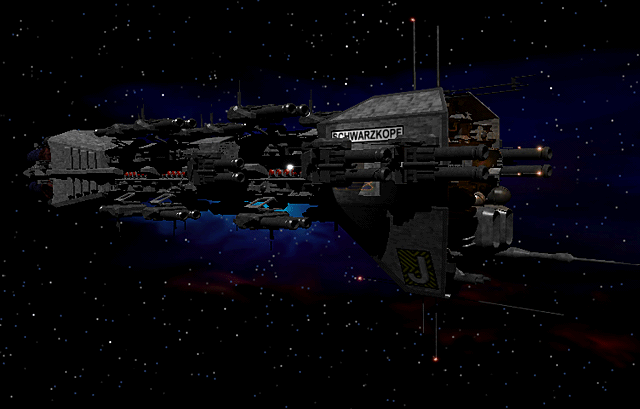
The whole point was to demonstrate how i think future terran warships should look like not to get in to a ship from another universe vs this universe debate.
The argument i was making is really about the superiority of non-aerodynamic box-like ships vs slick aerodynamic ships and how i think the industrial look that flying boxes have gives them a charm.
Just look at the nova class. The engineer behind that didn't want to dazzle his enemies, he wanted to destroy them asap and he didn't care how it would look like doing it.
He also made certain to include bullet traps, was dealing with a much more faithful space-recreation of WW2 navy combat (Outsider, in contrast, is more like a bunch of horse-back knights armed with lances, hence why Outsider battles are compared to jousts), was designing ships that were expected to take lots of hits without exploding (Outsider ships are more of rocket-powered time bombs than B5's flying bricks... and I'm
NOT referring to shape in either of those cases), and was designing for what is arguably the best-armed of the Young Races in the setting: the Minbari did so well in the Earth-Minbari war because Earthforce sensors couldn't lock on to them, Nova and Hyperion (?) weapons were capable of absolutely devastating the flag ship of the Minbari ruling council itself. To faithfully reproduce the weapons situation in Outsider, you would probably need to be the Loroi or Umiak, not the Humans. Just cause Earthforce has the tactical and strategic situation to use that design doesn't mean that the TCA does.
Jericho wrote:szurkey wrote:I actually like the aerodynamic look. Yes, I know that in most sci-fi setting it has no practical value (Traveller's fuel skimming of hydrogen off of gas giants being one notable exception), but for esthetics the aerodynamic look is great.
And this pretty much demonstrates my point. Aerodynamics is used for esthetics in space. Unless you warship is going into atmosphere it's mostly useless and expensive to produce. Large flat four cornered pieces that you can make in an larger press is cheapest, easiest and quickest way to produce large warships for your buck.
Your press can cut two triangles off of the edges to create pyramids with only a little bit more effort. Or, you could cut them between opposing edges. Large flat pieces that aren't wider than your existing equipment can produce are large flat pieces that aren't wider than your existing equipment can produce. Unless you absolutely must have a rounded hull, you don't need to do fancy stuff for a Spire, any more than you do for a Hammer.
And for the record, while it would be junk for combat in Outsider, I personally think that an Omega or similar B5 ship
would actually be the nicest present that the Outsider humans could receive without a focused investment from a more advanced power. After all, that star drive really
would be the wet dream of any Outsider captain, particularly since it's apparently possible to send a homing signal into B5 hyperspace with relatively little equipment: with that, Terran ships potentially COULD get within mass-driver range (though even then it might be dicey).

